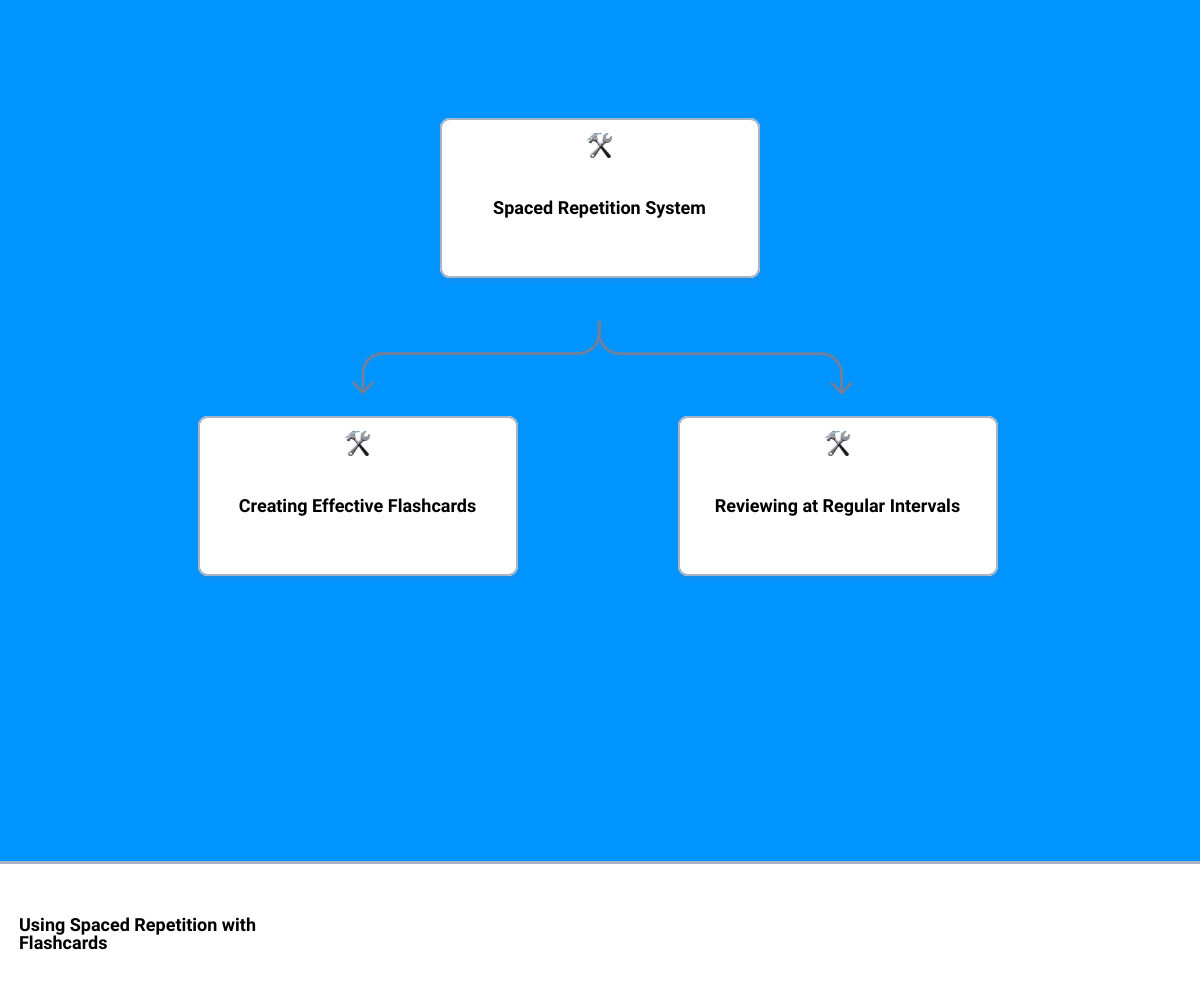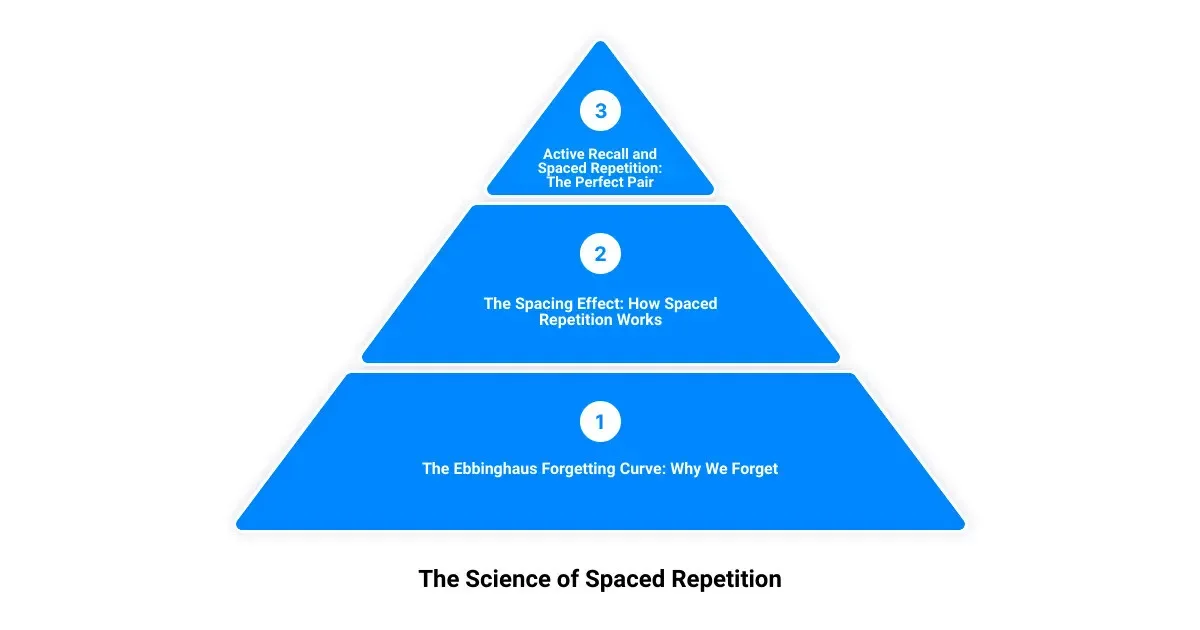Spaced repetition and flashcards could be the transformative tools you've been searching for in your journey to master Mandarin. As a lifelong learner, you're likely no stranger to the challenges of retaining new information, especially something as complex as Chinese characters. But what if we told you there is a scientifically proven method that can significantly boost your recall and retention, transforming your learning process? Welcome to the fascinating world of spaced repetition with flashcards.
Spaced repetition is a learning technique rooted in cognitive science. It involves reviewing information at increasing intervals over time. When you combine this with the use of flashcards, a method that stimulates active recall, you've got a potent recipe for long-term memory retention.
This strategy is not just an academic theory. It's backed by decades of rigorous research. As far back as 1939, H.F. Spitzer tested the effects of spaced repetition on 3,600 students in Iowa and found it to be highly effective. More recent studies have only reinforced these findings, solidifying the standing of spaced repetition as the strongest evidence-based learning technique available.
So, why does spaced repetition work so well? It's all about how our brains process information. Cramming may help you get through an exam or presentation, but it won't do much for long-term performance. On the other hand, spaced repetition leverages the spacing effect, which shows that learning is more effective when study sessions are spread out. This approach encodes more information into your long-term memory, making it easier to recall when you need it.
Now, imagine supercharging this technique by using flashcards. Flashcards, especially when used in a system like the Leitner method, provide a simple yet effective way to implement spaced repetition. This approach involves moving correctly answered cards to boxes with longer review intervals, ensuring that you're revisiting challenging information more often while reinforcing knowledge you've already mastered.
In the following sections, we will dive deeper into the science behind spaced repetition, provide a step-by-step guide on how to use it with flashcards, and share tips to maximize your learning sessions. We will also introduce you to Traverse, a powerful tool that can streamline your spaced repetition flashcard sessions, and share a case study of learning Mandarin using these techniques.
Ready to unlock your flashcard potential with spaced repetition? Let's get started!
Understanding Spaced Repetition: The Science Behind It
Delving into the realm of memory and learning, there are key scientific principles that make spaced repetition an effective technique. Understanding these principles will help you harness the full potential of this powerful learning tool.
The Ebbinghaus Forgetting Curve: Why We Forget
Ever wondered why some facts tend to stick in your memory while others vanish almost instantly? The answer lies in the Ebbinghaus forgetting curve. Named after the psychologist Hermann Ebbinghaus, this curve illustrates how information is lost over time if there's no attempt to retain it.
Ebbinghaus discovered that our memories decay rapidly after learning, but the rate of decay slows down over time. The good news is, we can slow down this forgetting curve. By revisiting the material just before you're about to forget it, you can reset the forgetting curve, making your memory stronger. Each review makes the information last longer in your memory, effectively pushing back the curve.
The Spacing Effect: How Spaced Repetition Works
At the heart of spaced repetition is the spacing effect, which states that our brains learn more efficiently when we spread out our learning over time. It's like building a brick wall; if you stack the bricks too quickly without letting the mortar dry, you won't end up with a sturdy wall. Similarly, spacing out your learning allows the "mental mortar" time to dry, solidifying your grasp of the information.
This spacing effect goes hand-in-hand with the concept of desirable difficulty, which implies a certain level of challenge is beneficial for learning. Spaced repetition, with its gradually increasing review intervals, provides just the right amount of challenge to keep our brains engaged and maximizes our learning.
Active Recall and Spaced Repetition: The Perfect Pair
The process of actively retrieving information from your memory without any external cues is referred to as active recall, and it plays a critical role in spaced repetition. Think of your brain as a vast library. The books (information) stay on the shelves (stored), but finding a specific book (retrieval) can get tricky if the library isn't organized regularly.
This is where spaced repetition comes into play, helping maintain retrieval strength by revisiting the information at optimal intervals. In this way, active recall and spaced repetition partner up to transform your learning process, making it easier for you to access the stored information whenever you need it.
With this understanding of the science behind spaced repetition, you're now well-equipped to leverage this powerful technique in your learning journey.

How to Use Spaced Repetition with Flashcards: A Step-by-Step Guide
Ready to unlock the power of your memory and supercharge your learning journey? Let's dive into the practical steps on how to use spaced repetition with flashcards.
Creating Effective Flashcards: The Basics
Your journey to mastering long-term recall begins with the creation of your flashcards. This process is simple yet strategic. Start by gathering your study material, which could be from your Mandarin textbooks, lecture notes, or any other relevant source. Instead of merely jotting down notes, transform that information into question-and-answer flashcards. The question acts as a 'cue' while the answer represents the solution. This creation process activates the principle of active recall, strengthening your memory connections from the get-go.
Implementing Spaced Repetition: The Ideal Time Intervals
The next step is to implement spaced repetition by setting ideal time intervals for reviewing your flashcards. Research suggests that the most effective schedule for spaced repetition is to review the material 24 hours after the initial learning session, then a week later, followed by two weeks, a month, two months, five months, and finally a year later. However, it's important to remember that these intervals are not one-size-fits-all. They might need to be adjusted based on factors such as your familiarity with the material, the complexity of the information, and your personal learning pace.
Testing Yourself: The Role of Active Recall
Once you've created your flashcards and set your review intervals, it's time to put them to the test. Review your flashcards and try to recall the answer. This step initiates the active recall process, creating stronger connections in your memory. Remember, using flashcards is not just about rote memorization but about enhancing your learning and building more complex connections and concept maps.
Reviewing at Regular Intervals: Beating the Forgetting Curve
Finally, it's time to review your flashcards at the set intervals. By employing this strategy, you're resetting the forgetting curve and enhancing your long-term memory retention. Review the flashcards just when you're on the verge of forgetting the information. The timing is crucial as it ensures that you're reviewing challenging information more often and strengthening the knowledge you've already grasped at spaced intervals.
By following these steps, you can harness the power of spaced repetition with flashcards to master Mandarin or any other complex subject with ease. Remember, flashcards and spaced repetition are tools at your disposal, and using them strategically can boost your learning efficiency and long-term recall.

Tips for Maximizing Your Spaced Repetition Flashcard Sessions
You've got your flashcards in hand and a rhythm for spaced repetition. Now, we'll dive into some proven strategies to take your learning sessions to the next level.
Balancing Recall Success and Error Rates: Finding the Sweet Spot
The goal of using flashcards in spaced repetition is to strengthen your memory, not merely to get every card correct. Yes, you heard it right! Making mistakes can actually be a crucial part of your learning process.
The Leitner System of flashcard review allows you to tackle challenging information more frequently, and this sometimes means encountering errors. Encountering difficulty during recall strengthens your memory, so embrace these mistakes. Just remember, the key is to find a balance. If you're getting every card correct, the material might be too easy or your study intervals too close. If you're making many mistakes, consider shortening your study intervals or simplifying the flashcards.
Sticking with the Schedule: Consistency is Key
One of the most important aspects of spaced repetition is, well, the spacing. Consistency in your study intervals is critical. Research suggests reviewing the material 24 hours after the initial learning session, then a week later, followed by two weeks, a month, two months, five months, and finally a year later.
Remember, this schedule is not one-size-fits-all. Adjust based on your familiarity with the material, the complexity of the information, and your personal learning pace.
Setting Up a Comfortable Study Environment: The Importance of Focus
Creating an effective study environment is essential. You need a space where you can focus and engage in active recall without interruptions. Whether it's a quiet room or a bustling cafe, find a setting that best suits your learning style.
Trying Spaced Repetition with and without Flashcards: Exploring Different Methods
Flashcards are an incredibly effective tool for spaced repetition, but they're not the only method out there. Consider trying other techniques, such as reading and summarizing texts, practicing problem-solving, or even teaching the material to someone else. These methods can be integrated with your flashcard sessions to provide variety and reinforce your learning.
Remember, the key to mastering long-term recall is not just about using flashcards or spaced repetition, but about using them strategically and effectively. By following these tips, you can unlock your flashcard potential and revolutionize your learning journey.
Using Traverse for Spaced Repetition with Flashcards
Squeezing the most out of your learning journey doesn't have to be a Herculean task. Implementing spaced repetition with flashcards can be made much more straightforward and efficient with the right tools. Traverse, an advanced learning app, is one such tool that can supercharge your learning experience in a structured, effective, and enjoyable way.
Traverse: A Powerful Tool for Spaced Repetition
Traverse stands tall among learning apps with its unique combination of mind mapping, spaced repetition flashcards, and connected note-taking. This all-in-one platform allows you to build a 'tree of knowledge', connecting flashcards to corresponding notes and pages for a holistic learning experience. Whether you're learning Mandarin or exploring a new subject, Traverse can be your go-to tool for mastering the art of efficient learning with its fascinating flashcard system.
The app keeps you organized and prevents the accumulation of notes, making your maps more valuable as thoughts mature over time. The spaced repetition flashcards are designed to enhance long-term memory and boost learning efficiency, turning fleeting information into knowledge that sticks.
Importing Anki Decks into Traverse: Continuing Your Learning Journey
Traverse understands that you might have already invested in other tools and resources such as Anki, a popular flashcard tool. Hence, it offers an easy transition for Anki users by being the first 100% Anki-compatible learning app. You can import your Anki decks and keep learning without missing a beat. This feature bridges the gap between two efficient learning tools, allowing you to continue your learning journey seamlessly.
Learning Mandarin with Traverse and Mandarin Blueprint: A Case Study
Learning Mandarin might feel like a daunting task due to the complexity of characters and tones. But with Traverse's interactive and engaging approach, you can turn this challenge into an enjoyable journey. Traverse has partnered with Mandarin Blueprint to offer a structured learning path that lets you master Mandarin at your own pace, transforming you from a beginner to a confident speaker.
Traverse's spaced repetition flashcards combined with Mandarin Blueprint's course structure provides an effective, comprehensive, and enjoyable way to learn Mandarin. Whether you are an aspiring polyglot or a dedicated student, Traverse provides the tools, structure, and flexibility to supercharge your learning potential.
In conclusion, Traverse does not only offer a platform for learning but it supports your journey towards mastering efficient learning with its fascinating flashcard system. And as always, the magic of spaced repetition flashcards can be your secret weapon in this journey.
Conclusion: Unlocking Your Flashcard Potential with Spaced Repetition
Harnessing the power of spaced repetition with flashcards is more than just an exercise in memory. It's about unlocking your full learning potential, making the most of each study session and actively engaging with the material on a deep, meaningful level. Spaced repetition with flashcards is a science-backed method that can transform your learning journey, making it more efficient, effective and enjoyable.
Using spaced repetition with flashcards is a journey of self-discovery. As you navigate through the study intervals, decide the complexity of your flashcards, and balance your recall success with error rates, you'll come to understand your unique learning style better. This knowledge will not only aid your Mandarin learning journey but also benefit your overall learning endeavors, providing you with a robust tool to tackle any complex subject.
Traverse offers a powerful platform to implement this technique. It not only aligns with the science of spaced repetition but also provides a flexible and user-friendly interface for you to create and manage your flashcards. Whether you're importing your Anki decks or starting afresh, Traverse has the tools and features to support your learning journey.
Remember, the key to mastering any complex subject, including Mandarin, lies in consistent practice, active recall, and spaced repetition. Flashcards, when used effectively, can be your ally in this process, helping you retain information longer and recall it faster.
In the end, the power to master long-term recall and unlock the full potential of flashcards lies in your hands. And with the right tools and techniques, you're well on your way to becoming a master of your learning journey. Happy studying!

